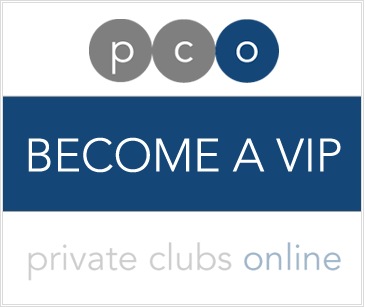Social Media and Student-Athlete Handbooks
Social media guidelines exist so that an entire company and all of its employees have a clear understanding of what’s expected of them when they are representing the business online, whether it be on or off the clock. Universities, typically a bit slower to catch up to mainstream business practices, are definitely behind the curve when it comes to establishing guidelines for students and student-athletes.
In browsing some of the athletic department policies and it was surprising to see program after program devote less than a page to such a pressing topic. For example:
Gambling …………………………………………………………………………………. 49
Hazing …………………………………………………………………………………….. 50
Social Networking Websites ……………………………………………………….. 50
Grievance Policy ………………………………………………………………………. 50
And on Page 50, under the rules for hazing came:
SOCIAL NETWORKING WEBSITES
Utilize your best judgment when using social networking websites. Our concern is not only about the content that is posted in the form of photos but also the proliferation of personal information, such as, cell phone numbers, class schedules and home addresses which many of you have made public. The content posted on these sites is not private. Your information may be currently viewed by: university officials, professors, parents, coaches, future employers, local and national media among others. Further, there have been a number of cases of assault that have been directly attributable to these sites.
As a student-athlete at (university name) you are held to a higher standard then the general student body. We ask that you do not post any information that might embarrass or otherwise cause harm to you, your team or the university.
Another athletic department gave a similar amount of space to the topic:
Team Rules………………………………………………………………..28
Voluntary Withdrawals…………………………………………28
Social Networking Websites …………………………………………29
Criminal Activity ………………………………………………………….29
And once you landed on Page 29, you found:
SOCIAL NETWORKING WEBSITES
Student-athletes are representatives of not only themselves and their teams but also Intercollegiate Athletics and the University as a whole. As outlined above, student-athletes are expected to conduct themselves in a manner that positively represents Athletics and the University. Student-athletes who post profiles on social networking websites, including MySpace and Facebook are reminded that the Student-Athlete Code of Conduct and behavioral expectations apply to those posted profiles. Student-athletes not only represent themselves and their families, but also their individual teams, Intercollegiate Athletics, and (university name). Student-athletes should consider if they would share information with all of those constituencies before posting it online.
Student-athletes are also encouraged to limit the amount of personal information they post on those sites for their own safety as well as for future job searches and background checks. Once the information is posted on the Internet, it is in the public domain and can come back to haunt the poster later. Many employers are already checking social networking profiles before making any offers of employment. Predators also spend time on such sites looking for easy targets. Student-athletes should please be careful and think twice about what they post, especially photographs and contact or schedule information. Student-athletes can be targeted by predators via social media, and should report any such contacts to their coach or the Associate Director of Athletics/Director, Athletics Academic Services.
It’s also interesting to see where social media appears in the table of contents, next to hazing and criminal activity, in these examples. It doesn’t have to be that way! Social media guidelines can also represent the positive and help your students use social media to their advantage. Guidelines that are ripe with “don’t” as well as best practices, will serve as a resource to your student-athletes. Keep in mind that, whatever guidelines you do implement should also be applicable to staff and coaches. Student-athletes are not the only ones to post inappropriate photos or tweet troubling comments. The purpose of social media guidelines is to inform what rules are in place, but also to allow everyone to achieve the department goals. You should want your team to be a success online. Guidelines are a good first-step to prepare them for that. (Education is a must, too!)
One service that Beaming Bohemian provides is the development of social media guidelines for your department. If you are an athletic department, a university or business who needs to establish this type of resource for your students or employees, please contact us. Social media guidelines are not a one-size-fits all rule book. They should reflect the culture of your department and allow everyone to take ownership in the final – and living – document. We can work together to develop the best handbook for you. Contact [email protected]
7 Handy Tips for Managing Multiple Social Profiles
When providing social media education to a group or department, the length of the session usually does not allow for a detailed overview of each network. (Oh how I wish it did!) Every social site functions so differently and allows you to reach a different target audience. But there are some common threads and methods for managing more than one profile. So here are seven handy tips to manage multiple social networks and your personal brand that I often share with my students:
1. Create a content plan.
The big brands do it, and you should do. Do you plan to write blog weekly? Twice a week? How often will you post to Facebook? Will you schedule your Tweets in advance or plan times each day to be live? Most importantly, what content are you sharing? What message do you want to communicate? Get organized and create a plan that will help you strategize your delivery and save you time on a regular basis.
2. Understand your settings, functions and features.
If you have never taken the time to go through the settings on each platform and understand how they work, now is the time to do so. If you adjust setting X, how does it change your profile? Do you read the pop-up windows when the network adds a new feature? Do you understand how each and every function can enhance your profile? It’s time to learn what these platforms do with your information and how you can take advantage of their features to make your personal brand shine.
3. Schedule time each month to review settings, functions and features.
In the digital age, big things happen in the blink of an eye. And some networks add new features without even telling you (Facebook). Take 10 minutes each month to make sure your settings are the way you left them and check if there are any new features you can use to build your profile. LinkedIn just added a bunch of fun settings. Go through each one and see if there is some value for you. Facebook seems to get a kick out of randomly resetting your settings to default just to keep you on your toes. So stay a step ahead and on top of your settings. Otherwise, you might be sharing content with people you don’t intend to share with.
4. Make your bio work for you.
You’ve probably heard this before, but it is essential, especially for job hunters. Use the same photo for all your profile pictures so that people know it’s you. Craft one short and strong bio that you can use in whole or in part across all your networks. Make sure it reflects who you are and why you want to connect. If you aren’t getting some of the results you think you should, or you are all of a sudden attracting a stange crowd on Twitter, change it up. Your bio and your photo are the first impression. How do you want to be perceived?
5. Be strategic about posting photos.
You might really be enjoying that tropical vacation. However, your professional connections do not need to see you at the beach in your bikini, proudly holding up that adult beverage. There is nothing wrong in posting fun and social photos, but how does that photo represent your brand? If viewed out of context, what impression with that photo make? Think a little bit about the photos you post. How will they help you in the long run? Do they enhance your image? What impact that photo make? If there’s the slightest chance that that one photo could embarrass you later, don’t post it.
6. Use lists to manage your connections.
I’ve written about the Facebook and Twitter lists functions before. Leverage this feature to your advantage. On Facebook, using lists can help you with custom privacy settings. And if you have a lot of friends, it will help you check in with some folks who may not be appearing in your Timeline as often as you would like. On Twitter, you can subscribe to other people’s lists and create up to 20 of your own. You can use the list function to separate Tweeps by topic or industry. You can create a leads or contact list. And what’s really helpful is that you don’t have to follow someone to put them on one of your lists. I have a news list and while the list is long, I follow less than a handful of accounts. But it serves as a great resource and good content to share with my followers.
7. Take care with who you friend and follow.
It might seem really cool to have 5,000 friends or followers, but if 80% of those are spammers, bots and porn stars, what good does that really do? If you friend someone on Facebook, Link with a connection on LinkedIn or follow someone on Twitter, you are associated with that person. So it might seem cool that RoxyXXX is following you, and in the spirit of #TeamFollowBack you might give an automatic follow to all who follow you, but when your potential employer finds you on Twitter and sees who follows you, it’s pretty certain that they won’t think you’re all that cool if your friends and followers are less than respectable accounts and people. Be strict with who you friend and link with and make sure to manage your followers. It’s better to have connections with substance than large numbers of fluff. (Note: Pinterest has yet to enable the feature of managing followers, so be careful. They have not responded to requests as to when they will allow people to block followers.)
Ultimately, take a pause before you post anything anywhere and determine whether that comment will benefit you and your brand. Determine if your content will make a positive impact on your viewers or if you leave yourself open to interpretation. Good question to ask yourself – What’s the point? If you can’t find one, don’t post it.
Get Bright Life E-News
Get free education and updates from Bright Life Media. E-news contains exclusive content for subscribers only. Say YES to a Bright Life now!





